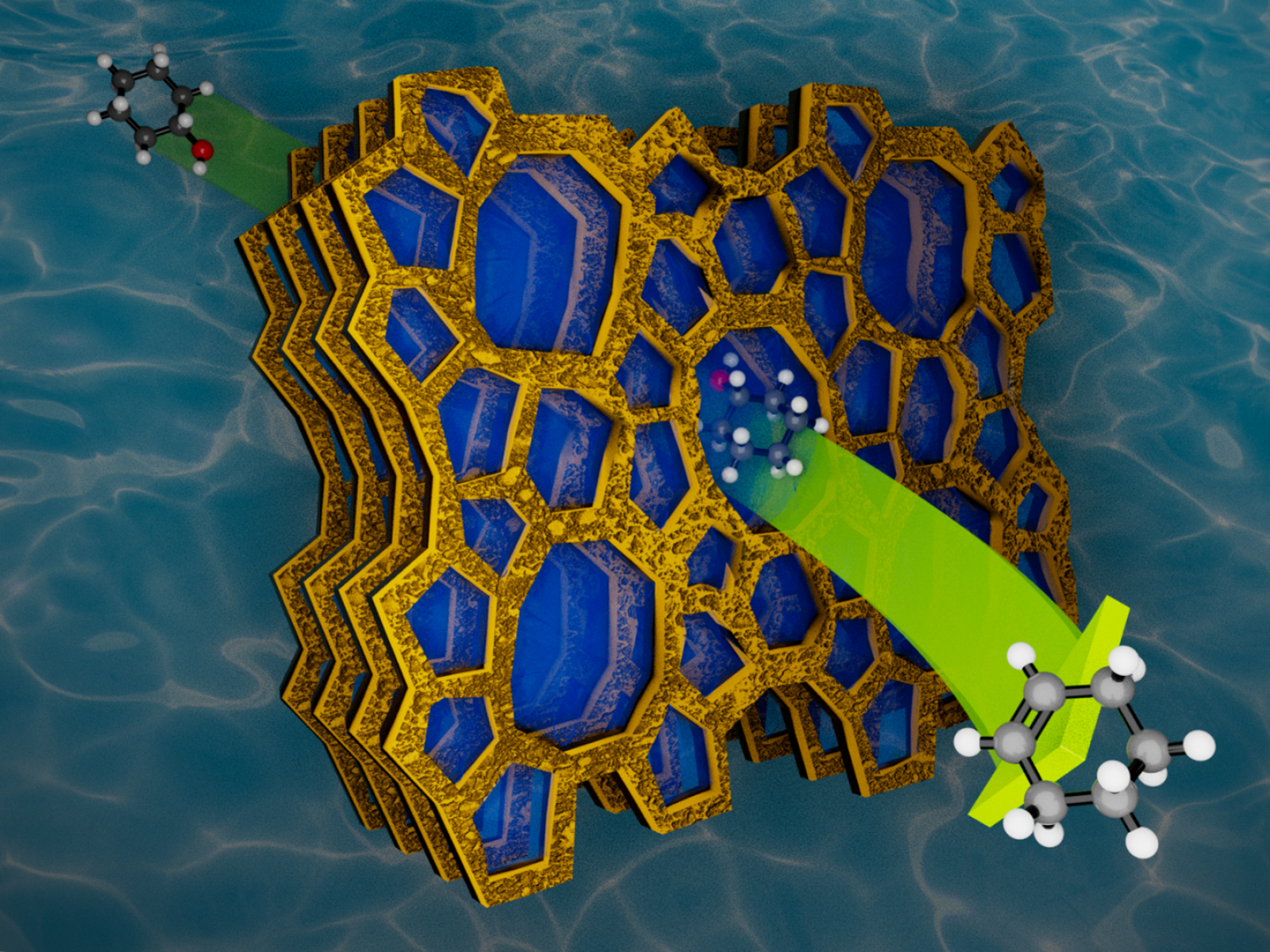Identifying the Maximum Impact of Ionic Strength on Reaction Rates within Zeolite Pores
Within zeolite pores, rates of alcohol dehydration increase with ionic strength until reaching a maximum and decreasing

Cyclohexanol converts to cyclohexene within zeolite pores.
(Image by Cortland Johnson | Pacific Northwest National Laboratory)
The Science
Zeolites are a class of mineral important to many industrial chemical processes, including biomass conversion. Zeolites contain extremely small pores where chemical reactions take place. Within these highly confined environments, the zeolite catalyzes the conversion of cyclohexanol to cyclohexene. As the ionic strength in the pore increases, accomplished by increasing the concentration of acid sites/hydronium ions in the pores, so do the reaction rates—up to a point. At extremely high ionic strengths, the reaction rate begins to decrease as the amount of energy required to separate and rearrange the hydronium ions in the pores becomes sufficiently large.
The Impact
Converting biomass into useful small molecules will be essential for reducing society’s reliance on fossil fuels. Developing a better understanding of the processes that occur within zeolite pores, where these reactions take place, can help researchers design new and more efficient materials. These materials may have controlled ionic strength, precisely targeted atomic structures, or use other optimization parameters.
Summary
Zeolite-based bioreactors rely on chemical conversions that happen inside the tiny pores within zeolite minerals. Some zeolites promote highly efficient biomass energy conversions, but at high temperatures and pressures. To understand how zeolites work at the molecular level, a team of scientists created a series of H-type mordenite framework inverted zeolites with specified density of acid sites. They investigated the reaction rate of the dehydration of cyclohexanol, a common biomass chemical, within these zeolites. They found that the molecularly sized confines of zeolites create a unique ionic environment that favors the formation of alcohol–hydronium ion complexes in the micropores. However, the ionic strength-based rate enhancement has a limit, which is observable in zeolites with high ionic strength. This limitation is a consequence of the increasingly dense ionic environment within zeolites, which requires energy input to be rearranged.
PNNL Contact
Karl Mueller, Pacific Northwest National Laboratory
Funding
J.A.L. acknowledges the support by the Department of Energy, Office of Science, Basic Energy Sciences program, Chemical Sciences, Geosciences and Biosciences division.
Published: February 21, 2023
Qiang, L., Pfriem, N., Cheng, G., Barath, E., Liu, Y., Lercher, A.J. 2022. “Maximum Impact of Ionic Strength on Acid-Catalyzed Reaction Rates Induced by a Zeolite Microporous Environment,” Angewandte Chemie, 62, e202208693. [DOI: 10.1002/anie.202208693]